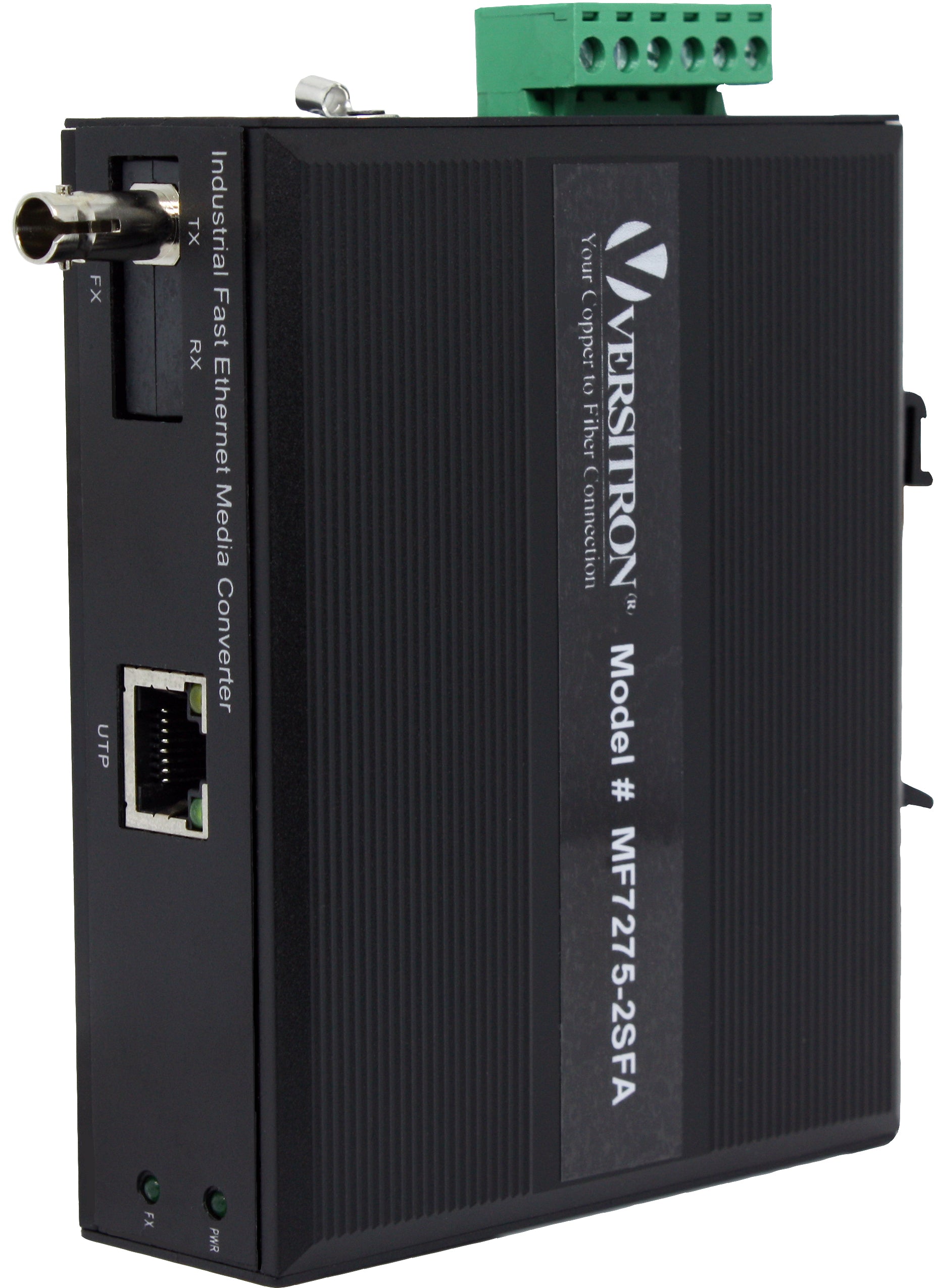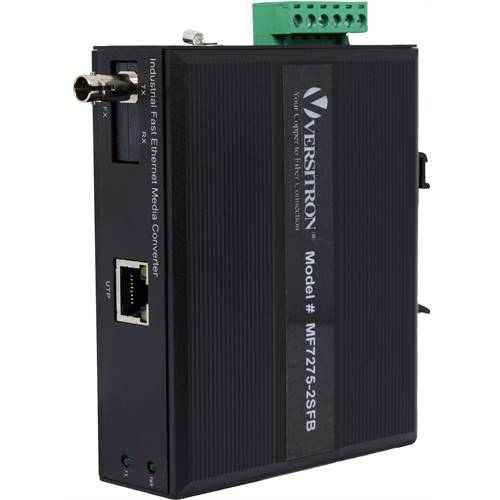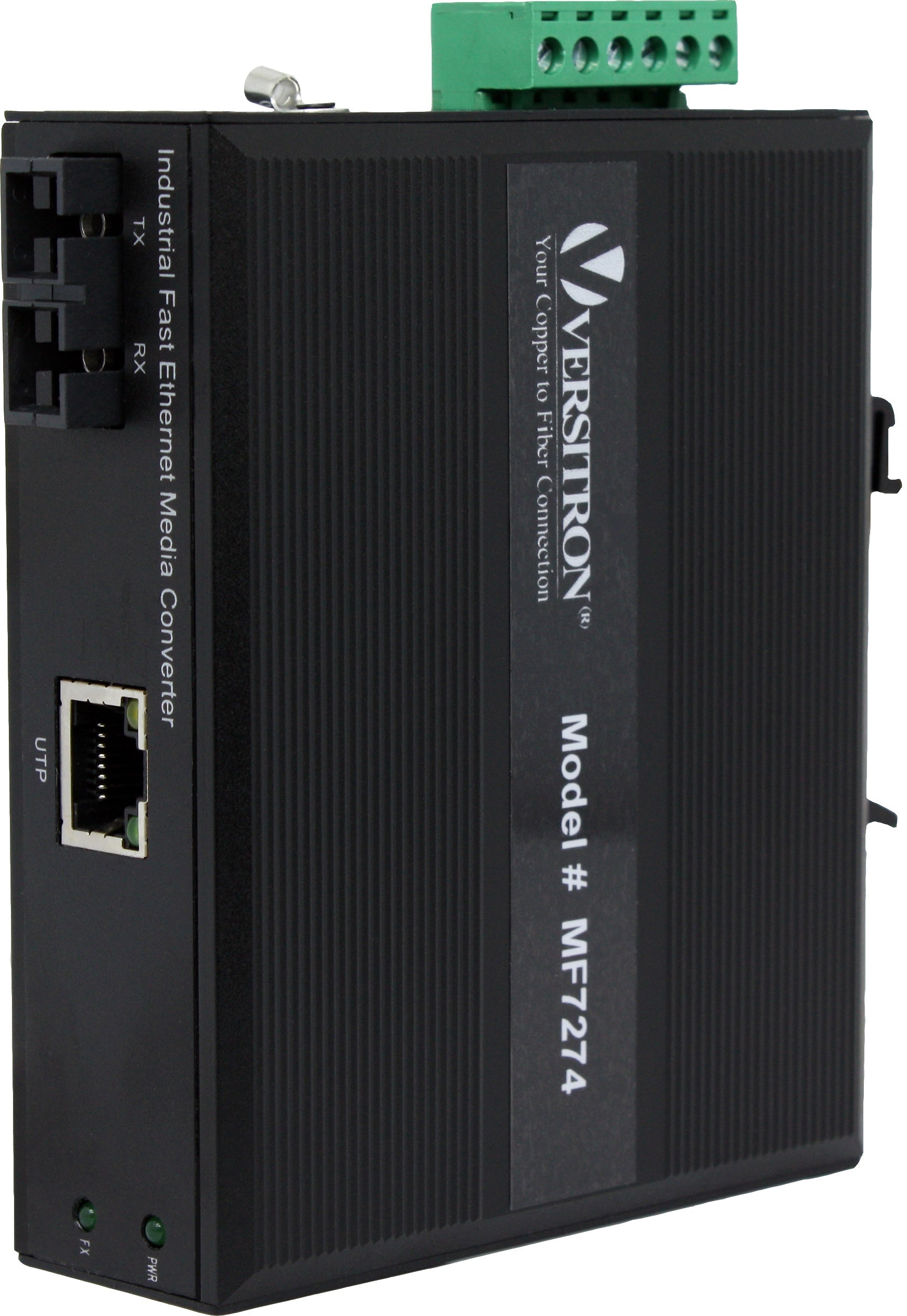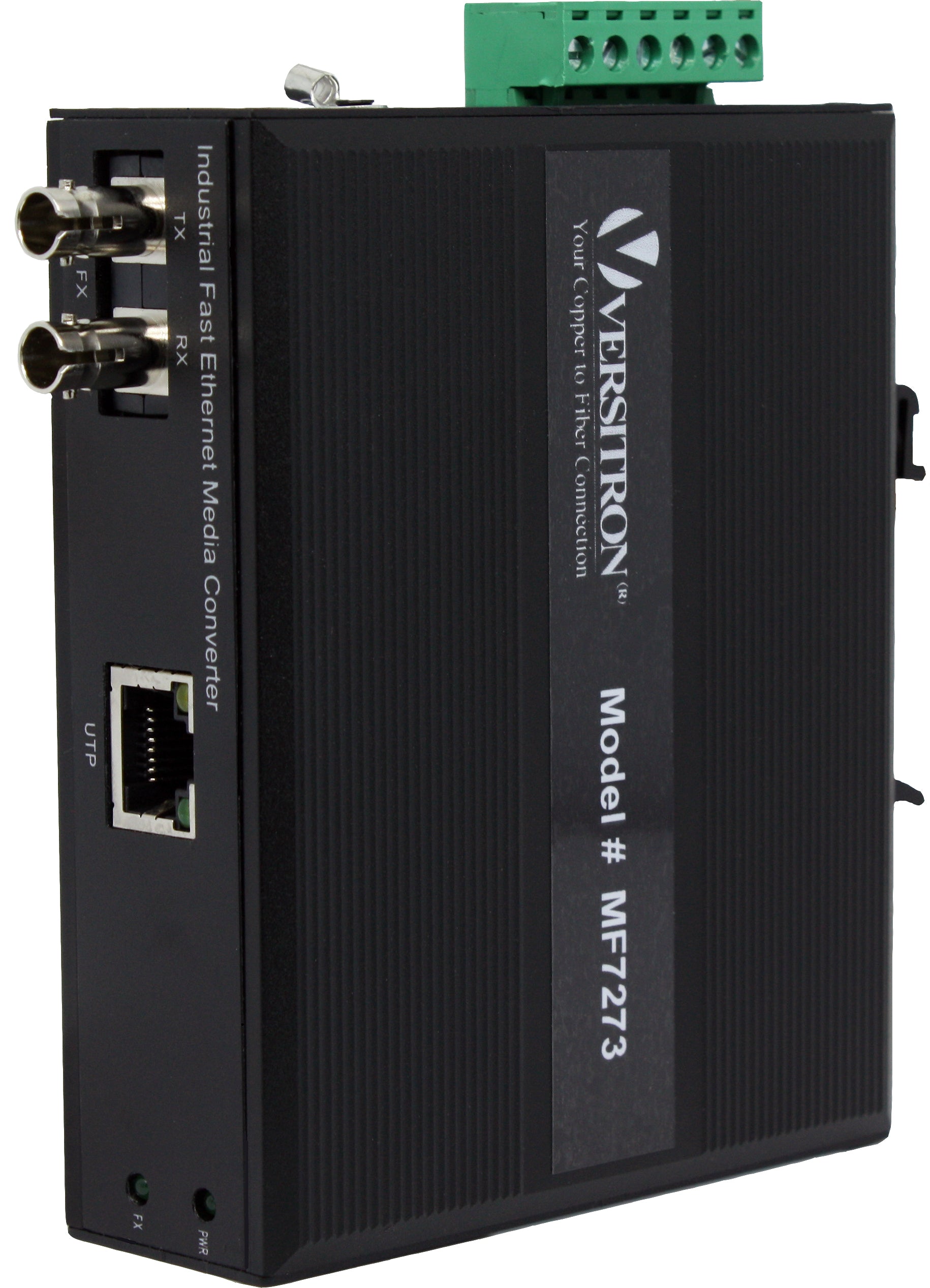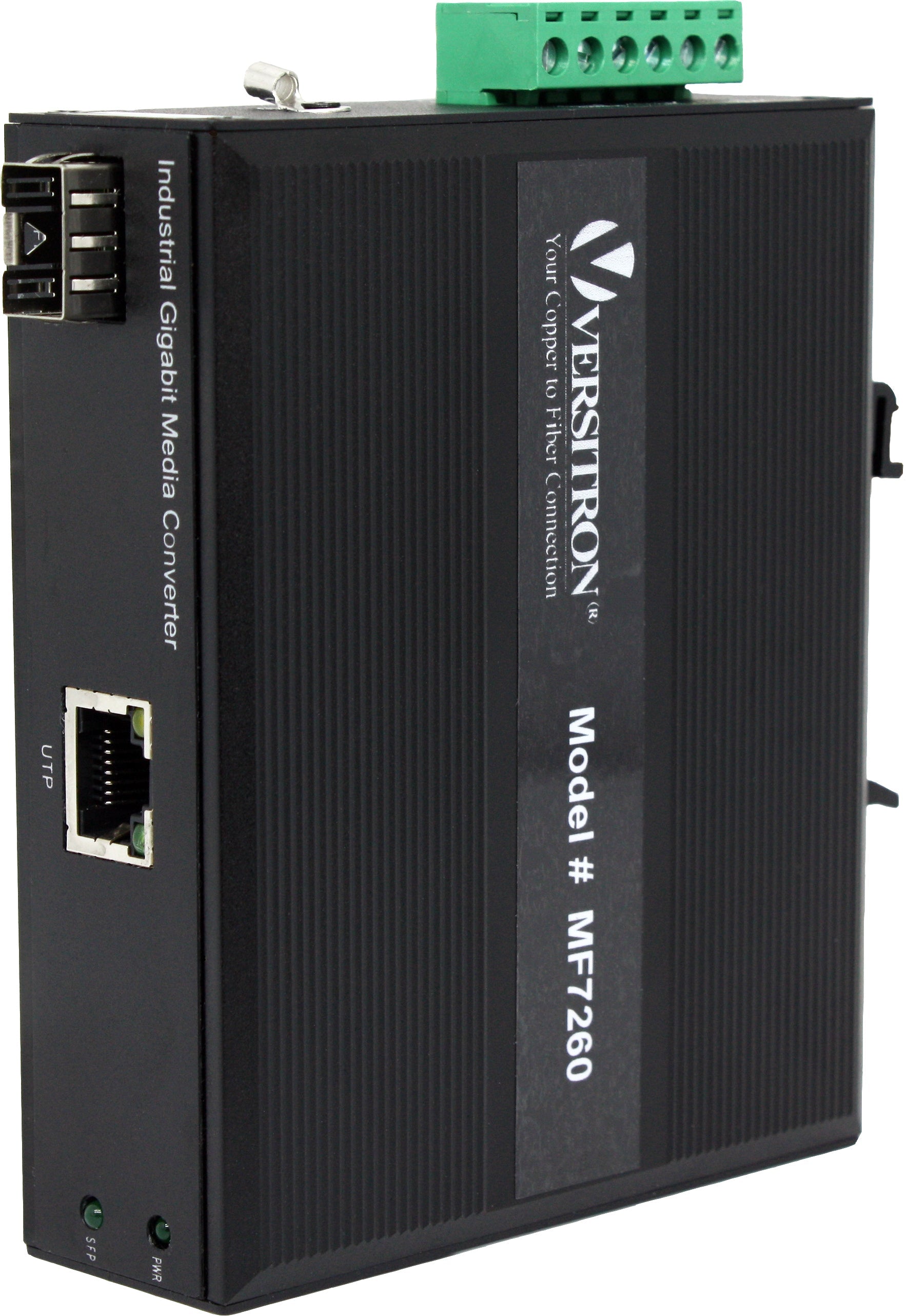
When security, uptime, and real-time data matter most, even a moment of network failure can mean millions lost - or worse, lives at risk. Whether it’s a surveillance camera on a busy city street, a communication system in a military outpost, or an automation line in a high-speed factory, your network must perform flawlessly, 24/7. This is where industrial media converters come in.
Built to withstand extreme conditions and deliver seamless Ethernet-to-fiber integration, devices like the hardened media converter, rugged Ethernet to fiber converter, and RJ45 to fiber converter are the silent workhorses behind today’s most demanding infrastructure. From public safety IP camera networks to military-grade communications, they ensure secure, high-speed, and reliable connectivity - wherever it’s needed most.
Industrial-Grade Connectivity for Harsh Environments
Engineered for the toughest conditions, industrial media converters serve as the backbone of networking in harsh industrial environments. Devices like the PoE+ media converter and SFP fiber media converter deliver performance even under extreme temperatures, high EMI, and vibration-heavy settings.
Whether your setup requires a single mode fiber converter for long-distance transmission or a multimode fiber converter for short-range, high-throughput connections, these converters enable real-time communication in mission-critical environments.
Some key benefits include:
- Compliance with IEEE 802.3 media converter standards for interoperability
- Fast Ethernet fiber converter support for legacy networks
- Gigabit media converter capability for high-speed data streaming
The high-speed Ethernet converter allows real-time responsiveness essential for surveillance, automation, and data transfer applications.
Empowering Smart Cities and Public Infrastructure
In the era of intelligent urban development, fiber-backed surveillance networks are vital. City planners and municipal IT departments depend on city surveillance system converters and government surveillance media converters to ensure seamless video transmission.
The smart city fiber network integrates components such as the public safety IP camera infrastructure and the municipal security network converter, connecting vital endpoints across city facilities.
Key deployment areas include:
- Traffic camera fiber converter systems for intersections and highways
- Traffic signal Ethernet converter setups for adaptive traffic control
- Fiber solution for government buildings to ensure secure connectivity
Homeland security surveillance converter technologies are critical for safeguarding national infrastructure. For real-time transit data, agencies employ public transit security converters.
Military and Defense-Grade Fiber Optics
Military-grade operations demand robust and resilient networking hardware. A military-grade media converter or a defense fiber optic converter ensures mission-critical data flows remain uninterrupted.
Solutions such as the tactical Ethernet to fiber device and battlefield communication converter are indispensable for combat zones and mobile command units. A rugged media converter for defense supports high-impact environments with EMI-resistant fiber converters and ST fiber converter for military installations.
Secure fiber optics for military deployments ensure encrypted, uninterrupted data transmission. The military IP camera system converter supports surveillance operations, communications, and rapid deployment scenarios.
Reliable Connectivity for Commercial & Enterprise Networks
Commercial environments require secure, reliable, and cost-effective infrastructure. An enterprise IP camera converter ensures surveillance systems function seamlessly, while the commercial building fiber converter forms the data backbone.
From the office surveillance network switch in corporate headquarters to business security media converters used in retail chains, these devices streamline centralized video monitoring. For temporary job sites, construction site security fiber ensures uninterrupted visual coverage.
Warehouse Ethernet to fiber devices help with automation and tracking. In factories, a factory surveillance media converter connects operational and safety cameras to control centers. In IT environments, data center fiber optic switches ensure low-latency, high-bandwidth transfers.
Advancing Video Surveillance Infrastructure
Surveillance networks are evolving rapidly. A CCTV fiber media converter enables existing analog systems to transition to digital. PoE for surveillance cameras simplifies installation and power delivery. For high-resolution video storage, NVR fiber connectivity is essential.
Organizations rely on hybrid analog-to-IP media converters for gradual upgrades. Outdoor IP camera fiber extenders allow deployment across parking lots, campuses, and industrial perimeters. HD camera network over fiber eliminates bottlenecks, ensuring a robust video surveillance fiber solution.
Fiber's capabilities enable:
- Long-range security camera fiber transmission
- Support for high-definition camera feeds without degradation
Optimizing Industrial Automation and IoT
In smart factories and industrial IoT environments, the automation system media converter is central to connecting sensors, controllers, and networks. A factory Ethernet switch to fiber ensures reliable internal communication.
Drilling site network converters and oil & gas field media converters withstand harsh environmental conditions. In mining operations, a mining surveillance Ethernet extender ensures continuous monitoring. Agricultural operations leverage a smart agriculture fiber converter to connect automated systems.
Fiber optics for industrial IoT boost system responsiveness. With hardened SC fiber devices and panel mount Ethernet converters, installations remain secure and durable. A wide-temperature media converter ensures stable performance from -20°C to +80°C.
Transportation, Transit, and Traffic Control Applications
Modern transportation relies on resilient fiber networks. Traffic surveillance fiber networks and highway camera media converters monitor flow and safety. A railway IP camera infrastructure maintains station security, while an airport fiber optic converter supports secure terminal operations.
Port surveillance fiber media devices protect harbors, and public transport video network converters enable real-time monitoring of buses and subways. For roadside cabinets, a signal cabinet Ethernet to fiber converter enables intelligent traffic systems.
Toll operations rely on secure communication for toll booths using smart traffic system converters and transit fiber optics for surveillance across roadways and checkpoints.
Enhancing Performance and Network Security
Applications that span large distances use a long distance fiber media converter for uninterrupted coverage. A secure fiber converter for data transmission ensures critical information is encrypted and protected.
Some installations require encrypted video over fiber. Users also compare ST vs SC fiber for surveillance to select the best connector type. A LED indicator network device makes network diagnostics simple.
Understanding options like single fiber vs dual fiber converter setups is essential for optimal design. A weatherproof Ethernet converter ensures outdoor readiness, while a low latency fiber optic switch supports real-time data. Deployments in EMI-heavy zones benefit from a high EMI fiber solution, and power over fiber (PoF) for security offers electrical isolation.
Maximizing ROI with Scalable Fiber Solutions
Modernizing a legacy copper to fiber upgrade avoids full infrastructure overhauls. Choosing a cost-effective surveillance network reduces both capital and operational expenditures. Many organizations reduce OpEx with media converters.
Retrofit IP camera system integrations are simple with a fiber bridge for legacy systems. Hybrid coax to fiber solutions help during staged upgrades. Fiber for structured cabling upgrade ensures bandwidth scalability.
For outdoor environments, a NEMA-rated media converter offers additional protection. To reduce downtime with rugged converters, ensure proper installation and planning. Fiber optic for secure zones is vital in labs, data centers, and financial institutions.
Answering Common Professional Queries
-
What is the best media converter for CCTV?
It depends on your range, resolution, and environmental factors. -
Can I convert RJ45 to fiber?
Yes, using an RJ45 to fiber converter. -
How to run fiber to security cameras?
Use a fiber optic media converter and install appropriate cabling. -
Does PoE work with media converters?
Absolutely—particularly when using a PoE+ media converter. -
What is the best media converter for harsh environments?
Look for features like high EMI resistance, NEMA-rated casing, and a wide-temperature media converter for best results.
Final Thoughts
As data demands grow and security needs evolve, the industrial media converter has become a cornerstone technology across commercial, industrial, and government applications. Whether you're deploying a battlefield communication converter, upgrading a city surveillance network, or expanding data center operations, these devices ensure your network is ready for tomorrow.
From DIN rail media converters to military IP camera system converters, the flexibility, security, and scalability of these technologies make them essential in building resilient and future-ready network infrastructure.



